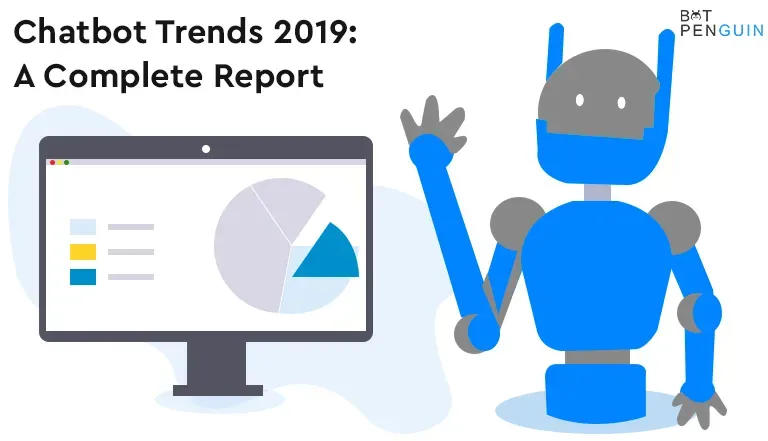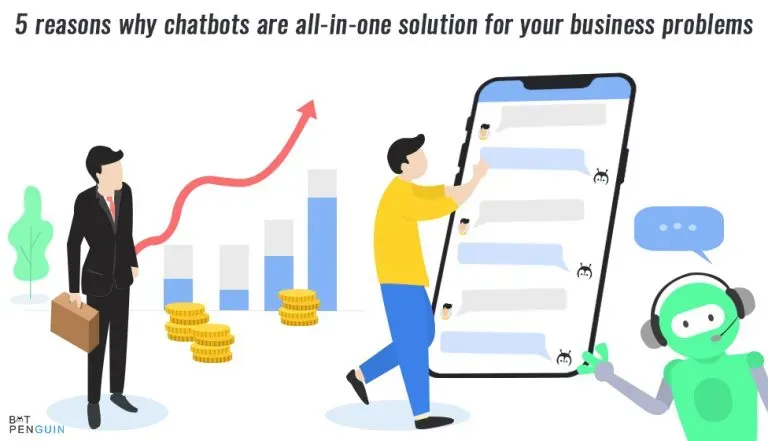Chatbots have become a household name nowadays. The chatbot is gaining popularity among business people and customers, with more applications and websites.
Chatbots use artificial intelligence, machine learning, and natural language processing that enables customer engagement through text, speech, or message. Chatbots are present on Facebook messenger, Slack, WhatsApp, etc. It helps businesses expand their platform for a bigger audience through APIs at a lower cost.
The ease of chatbot usage and its growing size contribute to its popularity.
Everyone is eager to know about the latest trends in chatbots or statistics, and the size of the chatbot market. Experts predict that the global chatbot market size will grow at a CAFR of nearly 29%, with over USD 1.73 billion.
The year-over-year growth rate of chatbots in 2020 and 2021 was around 25%. So, what's the growth percentage this year? Are there any new trends in the chatbot? What about chatbot ecosystem research?
To find the answer to all these questions, continue reading this article about the chatbot market in 2023.
What is Chatbot?
A chatbot is a software program that provides direct online chat discussion via text or text-to-speech 24 hours a day, seven days a week. Chatbots now integrate with Artificial Intelligence (AI) technology and Machine Learning algorithms to encourage a natural language discussion with the user via messaging apps, websites, and mobile apps.
Several firms use Natural Language Processing (NLP) in their chatbot models. For example, Yellow.ai, a conversational AI platform provider, will raise USD 78.1 million to grow its AI-based chatbot platform globally using Natural Language Processing (NLP).
The chatbot industry is gaining a tremendous pace because of medium and large businesses' widespread use of customer service operations to cut operational expenses. According to a Tech Times study from 2021, a company's call center expenditures can be cut by up to 40% using conversational AI-based systems. Increased chatbot integration will boost agent productivity.
Because people increasingly prefer messaging apps over social networking sites, OTT messaging apps like Facebook Messenger, WhatsApp, and WeChat, among others, are expected to see increased demand for chatbots throughout the projected period.
Chatbot Market – Size & Growth
The industry will undoubtedly continue to grow as chatbots lower business running expenses. Chatbots may function in various categories, including marketing, payments, processing, and service. Still, when it comes to income, service takes the lead.
According to Insider Intelligence, "consumer retail spending via chatbots is expected to reach $142 billion by 2024, up from $2.8 billion in 2019."
Consumers today expect round-the-clock service in various sectors, from banking and finance to health and wellness. As a result, businesses are racing to build chatbots and virtual assistants that can answer customers' inquiries at any time of day.
Large firms led the market in terms of revenue share in 2020, accounting for 47.7% of the total. Several significant businesses construct chatbots according to a set of rules. Nevertheless, massive businesses will optimize their chatbots to accomplish more complex operations in the future.
Most chatbot creation tools use a machine learning methodology, allowing companies to create an AI application interface that delivers meaningful business data. Furthermore, advances in artificial intelligence have resulted in a significant shift in usage from online social networks to mobile-based messaging apps.
Chatbots are the choice of around 45 percent of end-users as the primary form of contact for customer care operations. Due to its widespread use in significant businesses, the large enterprise sector accounted for the most significant market share in 2020. Over the projection period, the category will have the most crucial market share. On the other hand, the medium enterprise category will develop fastest.
Chatbot Market – Stats and Trends
Chatbot Trends 1. The fastest-growing avenue for brand communication is chatbots.
Chatbot Trends 2. By 2023, 70% of white-collar professionals will communicate with a chatbot somehow.
Chatbot Trends 3. In the last 12 months, 67% of worldwide customers interacted with a chatbot.
Chatbot Trends 4. Most customers (87.2%) have had a neutral or good experience with chatbots.
Chatbot Trends 5. By 2023, chatbots will handle 75-90 percent of healthcare and banking queries.
Chatbot Trends 6. Facebook has over 300,000 active chatbots.
Chatbot Trends 7. Chatbots handle 68.9% of all chats from start to finish.
Chatbot Trends 8. The most common use case for chatbots is to get a quick answer to a question.
Chatbot Trends 9. 41.3 percent of consumers use conversational marketing tools for purchases.
Chatbot Trends 10. 10.33% of customers want to utilize chatbots to make reservations.
Chatbot Trends 11. Chatbots have a response rate of 35-40%.
Chatbot Trends 12. Bot-only conversations have an average satisfaction percentage of 87.58 percent.
Chatbot Trends 13. 68% of customers choose chatbots because they deliver timely responses.
Chatbot Trends 14. Consumers rank 24/7 help as the top benefit of chatbots.
Chatbot Trends 15. Online retail shops use chatbots the most.
Chatbot Trends 16. By 2023, chatbot eCommerce transactions will reach $112 billion.
Chatbot Trends 17. Using abandoned cart chatbots with Messenger increases eCommerce revenue by 7 to 25%.
Chatbot Trends 18. 55% of companies that utilize chatbots produce more high-quality leads.
Chatbot Trends 19. Chatbots can help organizations save up to 30% on customer service expenditures.
Chatbot Trends 20. By 2023, chatbots will save organizations $8 billion.
Chatbot Trends 21. By 2023, chatbots will save organizations 2.5 billion hours.
Chatbot Trends 22. Consumers' top concerns about chatbots include "a lack of comprehension" and "inability to address complicated situations."
Chatbot Trends 23. Forty-six percent of customers believe chatbots are employed to prevent them from contacting a real agent.
Chatbot Trends 24. 60% of customers believe people can better grasp their demands than chatbots.
Chatbot Trends 25. 60% of customers would rather wait for a live person than utilize a chatbot.
Chatbot Market 2023: Ecosystem Research
The chatbot ecosystem is rapidly increasing. Deployment channels, third-party chatbots, organizations that supply the technology for constructing chatbots, and native bots are all part of the underlying technology and platform ecosystem for chatbots.
Chatbots live and communicate with users through deployment channels such as messaging applications, cloud networks, SMS, and email clients. Third-party chatbots are companies and services that a client may use to order an Uber using Facebook Messenger.
Bot building companies are primarily third-party firms that use artificial intelligence (AI) to assist organizations in deploying their chatbot across several platforms. Finally, native bots are created by the venue or program in which they are used (such as Apple's Siri or Google Assistant).
LinkedIn, Starbucks, British Airways, and eBay are just a few prominent organizations that have announced their support for chatbots within their businesses. Chatbot industry leaders like Facebook, Google, and Microsoft have been investing in the development of chatbot technology for years. They are still working on essential bot projects.
The popularity of chatbots has prompted a slew of new startup innovations to follow in their footsteps across a wide range of sectors. Some chatbot firms, such as BotPenguin and Chatfuel, have a lot of money and the ability to change the market.
The Global Chatbot Market Segmentation:
- By Type: Text, Voice, and Hybrid
- By Platform: Standalone, Web-based, and Messenger-based/Third party
- By Organization Size: Small Enterprises, Medium Enterprises, and Large Enterprises
- By Application: Bots for Service, Campaign Management, Social Media, News Delivery, Payments/ Order processing, Churn Analysis, Marketing, and Data Aggregation
- By End-User Industries: BFSI, Manufacturing, Healthcare, Education, Retail & E-commerce, Energy and Utilities, Travel & Tourism, media, and Entertainment
Conclusion
Chatbots act as the mainstream bridge for communication between businesses and customers. Its various features help customers at every step. Chatbot with automation will make the customer service base more robust and accessible to all companies.
The evolution of chatbot architecture will include AI as the standard tool for customer service. Many companies are developing advanced chatbots and machine learning technology. Even now, anyone can build a chatbot with any coding.
The growing size of chatbots will take the business to another platform, giving excellent customer service.
Check out BotPenguin here to set up your chatbots in no time.


